Cuba, a fly fisherman’s delight and land of the grand slam, is a destination for all the senses. It’s the largest island in the Caribbean, enjoys a diverse landscape, colourful culture and fish-rich waters. Despite the adversities that the people face here, they go about their daily lives with a friendly smile and offer fantastic music, elaborate art and rum fuelled cocktails.

No trip to this part of the world is complete without a stay in the capital, La Habana. Whilst many of the buildings lie in various states of disrepair, their crumbling walls provide an insight into a rich past. Beautiful marble staircases, large murals and elaborate architecture. Fresh cigar smoke drifts through the streets and live Son Cubano and Rumba are a treat for the ears.
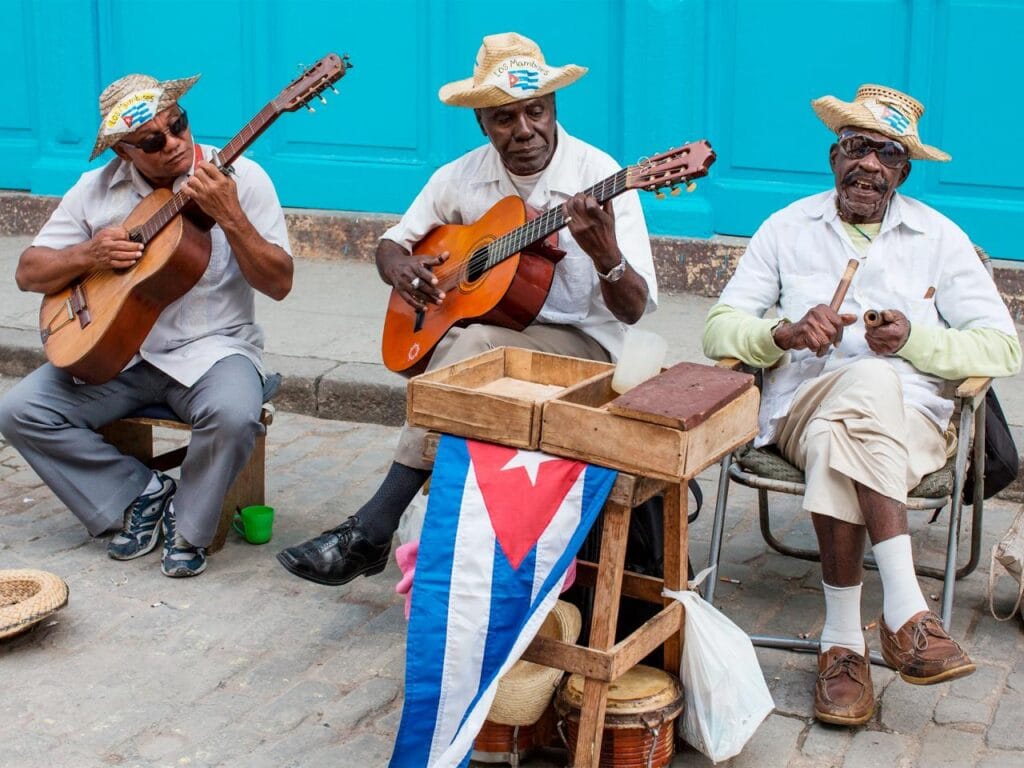
Departing from the hustle and bustle of the capital you can travel in most directions to find wonderful saltwater fishing. Few locations in the Caribbean can boast about the size and numbers of the most notable of saltwater fly fishing species; bonefish, permit and tarpon, like Cuba can.
One specific location in Cuba is the archipelago of Jardines de la Reina, an area so beautiful that it was named by Christopher Columbus in honour of the Queen of Spain, Isabella I of Castile. For more than 30 years the area has been protected and managed as a unique nature reserve that has, in turn, made it a spectacular place to fly fish.
Whilst traversing through the dozens of cays and drifting over acres of turtle grass and sand may be far more comfortable than it was in Columbus’ day, much of the wildlife and beauty remains. Numerous birds fill the sky, hutias clamber through the mangroves, and crocodiles slide through the shadows. Beneath the water’s surface, tortugas (turtles) push past, various rays glide effortlessly, and a plethora of fish glimmer in the warm sunshine.
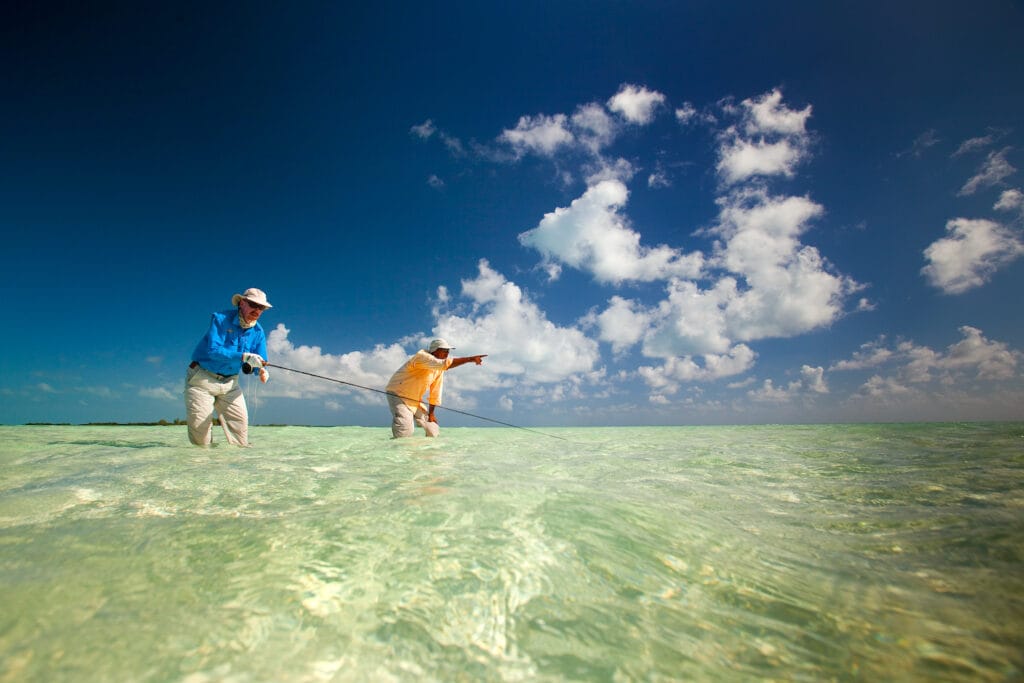
These waters offer some of the best chances to achieve the coveted Caribbean flats grand slam, the successful landing of a bonefish, tarpon and permit all in the same day. Here is how a grand slam day may look…
0630, you awake to the gentle rocking of the mothership. Ascending to the ship’s main deck, the smell of coffee leads you to breakfast whilst darkness still blankets the surrounds. Light comes quickly in this part of the world, and by 0730 morning rush hour ensues as happy anglers board their skiffs.
Although the light is flat at this time of day, this makes it optimum for searching for tarpon. With little to no subsurface visibility, anglers rely on surface activity which the tarpon duly obliges. Leaving the tangle of mangrove roots, the silver king moves in schools in open water. They roll through the surface like porpoising dolphins hunting large shoals of sardines. A 1/0 white Tarpon Toad grabs the fish’s attention and soon the calm of dawn is smashed by large, angry fish taking to the surface. As many fish are lost as landed, but by bowing to the king those odds often shift towards the angler.
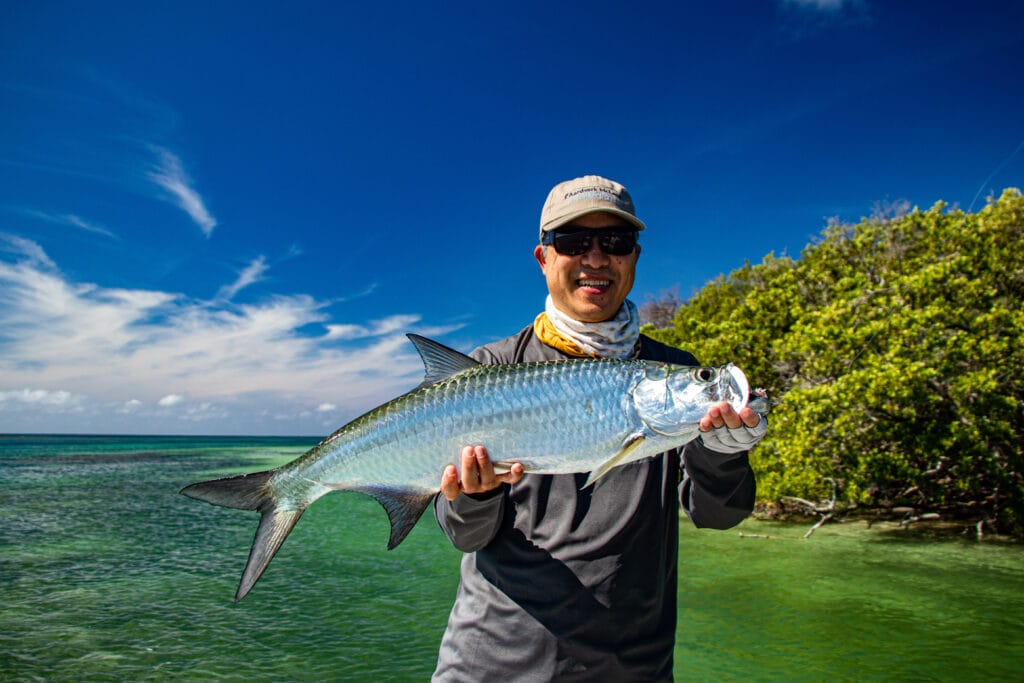
It is now 0900, the sun has climbed quickly into the sky and the inky surface of dawn has given way to complete clarity. A window to the world beneath the surface, with luck combined with a pushing tide. The deepening water allows the likes of bonefish and permit the chance to push further up on to the flats to feed. A grand slam hungry angler should use this time wisely to hunt one of the ficklest fish in the sea, the permit.
Standing at the bow of the skiff, an angler should be poised with fly in hand, a castable length of line stripped from the reel, and medium tension set on the reel drag. The guide manoeuvres the boat from a raised platform at the stern, scanning the water for any sign of the black-tailed devil. Patience is key at this stage; you might go five minutes until you see a fish, but you may also be drifting for two hours before an opportunity arises and even then, chances are often against the angler. Belief and focus are a must.
The majority of permit shots are to moving fish, rather than stationary feeding fish. Therefore, when an opportunity does present itself, things happen quickly. The guide’s call comes… “Palometa! 9 o’clock! 50 feet!” Instinct has you wanting to cast, but take a moment, try to locate the target first. Once locked, make your cast in front of the fish. With moving permit you will want to start your retrieve almost immediately. A long steady strip is perfect to set the hook, and then sit back and enjoy the ride. Fly line and backing will disappear at speed and numerous times over. Panicking is just part of the joy of it!
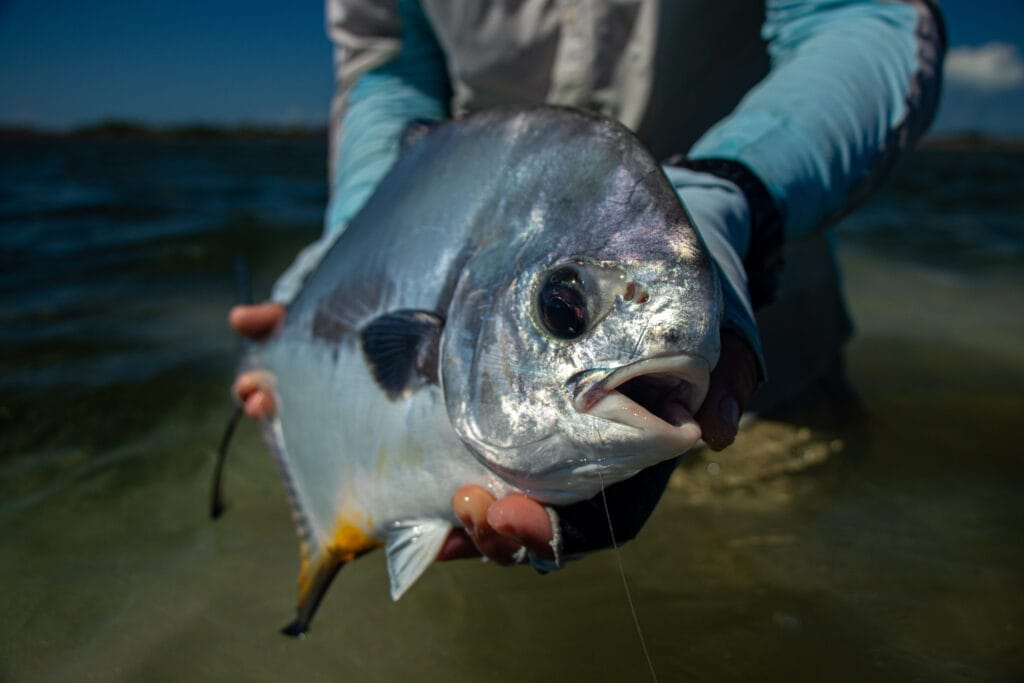
It is 1200, you have already landed two of the most sought-after species in flats fly fishing, now is a perfect time to moor the skiff in the shade of the mangroves, enjoy a cold beer and assorted lunch. Make sure you also keep your water intake up throughout the day, being in the sun, out on the flats all day, is incredibly dehydrating. While it is vitally important for your health, it is also important as it helps to maintain concentration.
Returning to the flats at 1300, the final target is clear… the bonefish. The ghost of the flats is one of the most widely targeted of all the flats species, and for great reason; they provide wonderful sight fishing opportunities, readily eat a fly, and fight pound for pound as strong as any fish that swims. In this part of Cuba, they average a very healthy three to four pounds, with fish in excess of ten pounds very possible.
By now the tide has turned and the water is draining from the flats; this is not the optimum time to target bonefish but it was important to use that time chasing permit. That said, the changing conditions bring about exciting opportunities. The dropping water exposes the backs of bonefish trying to hold on the crustacean filled turtle grass and away from the hungry mouths of patiently waiting sharks. They are understandably more skittish now, so you may want to drop down in rod weight and switch to lightly or un-weighted flies to offer a more delicate approach.
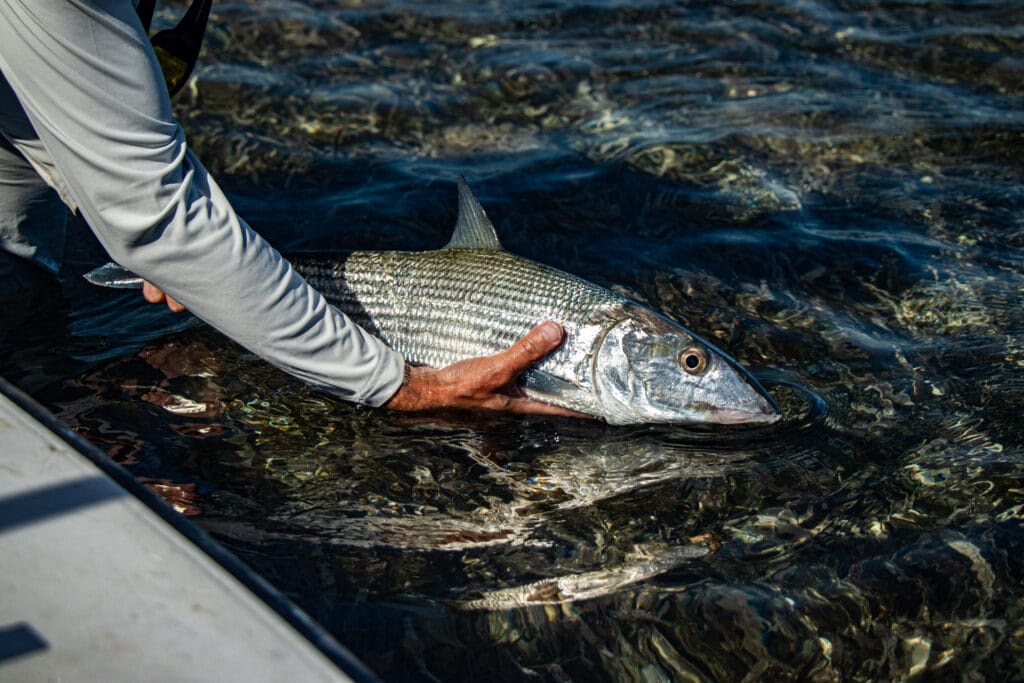
The bonefish can now be spotted at greater range, but longer casts are required so not to spook the fish. Anglers can be more selective, dorsal and tail fins cut their way through the surface. Taking your time, a cast should be made to the fish with the greatest distance between the dorsal fin and tail. In these conditions, it is common to spook several shots but incredibly exciting when you see the fins change direction towards your fly. As they near, the tail will flick a bit faster, then the line will draw tight. Set the hook and, as with the permit, sit back and enjoy all your line emptying off the reel.
Now it is 1630, the sun is beginning to drop slowly but surely. You are gliding in skiff across open flats and weaving through mangrove channels back to the mothership for a chilled aperitif and welcome hors d’oeuvres. You have achieved a grand slam, an accolade that most saltwater anglers can only dream of.
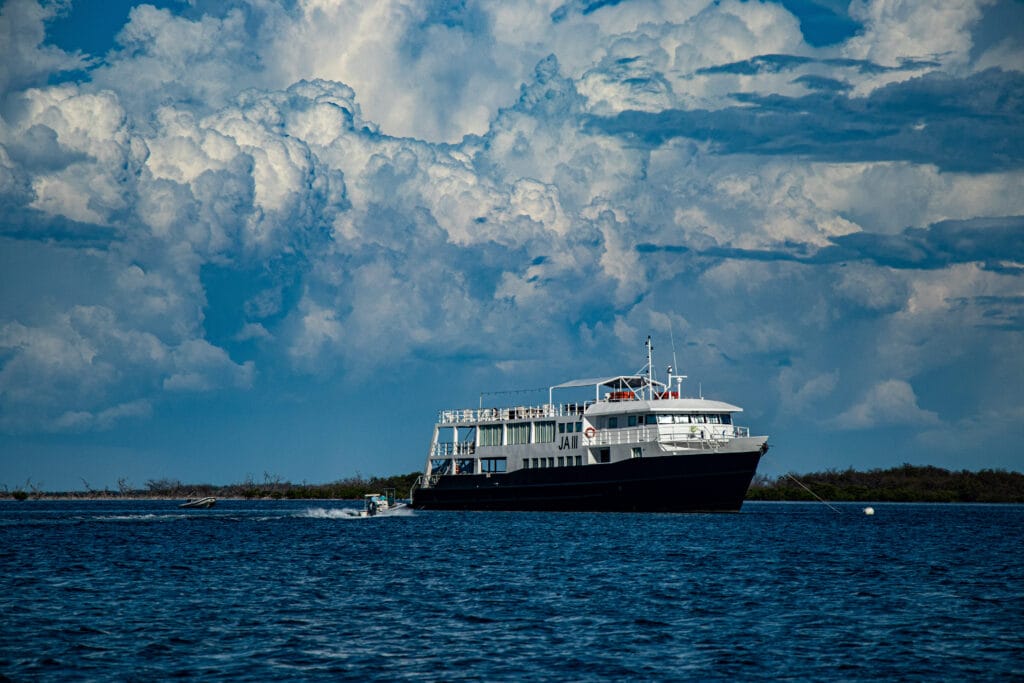
If you would like more information on planning a fishing holiday in Cuba, land of the grand slam, please contact Peter McLeod or Alex Jardine or call us on ++44 1980 847389. Alternatively click HERE if you would like us to contact you.
This article was originally printed in the spring issue of H20 magazine
